"I'm too old to remember." With the increasing age, many people will sigh that their memory is gradually declining. So is there a way to make this natural phenomenon "change life against the sky"? Nature said: Yes.
A new study published by Stanford University in nature found that:
The cerebrospinal fluid (CSF) of young mice was injected into the brain of old mice, and its memory was improved!
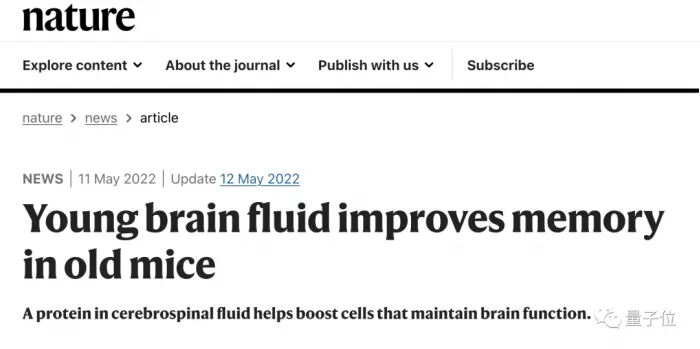
Specifically, 40% of the elderly mice could recall the stress experiment they had experienced a few weeks after being implanted into the cerebrospinal fluid of "small fresh meat".
In contrast, in the control group, the data of that wave of elderly mice was only 18%. (there is a feeling of "star sucking method" in this process)
The researchers believe that this method of direct perfusion of young cerebrospinal fluid can improve the conductivity of neurons in elderly mice, so as to improve the formation and recall process of memory.
In this regard, Maria Lehtinen, an expert at Boston Children's Hospital and a neurologist at Harvard Medical School, said:
This is the first study to show that cerebrospinal fluid injection can really improve cognitive function, so this study is a milestone.
The new direction it opens up is very exciting. We can use cerebrospinal fluid as a treatment for various diseases.
Some netizens also believe that this will be "the hope of Alzheimer's disease".

"Sucking" young cerebrospinal fluid, the brain "rejuvenated"
It is not difficult to see that in this Stanford study, cerebrospinal fluid is the key point to wear the protagonist's aura.
It is a colorless and transparent liquid, which mainly exists in our ventricles and subarachnoid cavities:
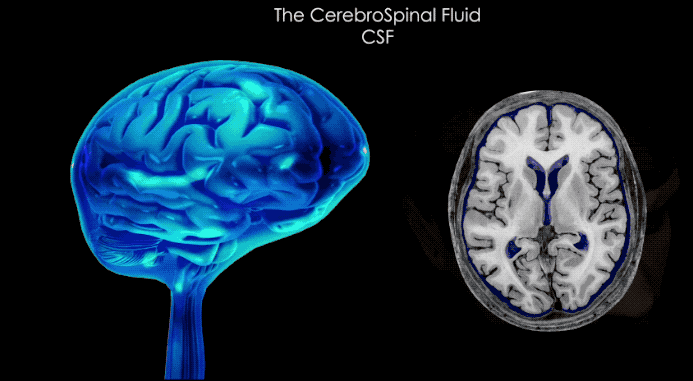
Cerebrospinal fluid surrounds and supports the whole brain and spinal cord, which plays a certain protective role in external injury; It also plays the role of lymph from other parts of the body - removing metabolites and inflammatory exudates.
Based on this, the researchers carried out an experiment to "rejuvenate" the aging brain.
The first to appear was the "old age group" - 18 20 month old mice.
The team first gave each "senior group" member three mild electric shocks to his feet, accompanied by several flashes and sounds. The purpose of this is to enable them to form a special memory, that is, the pain of electric shock is connected with external stimuli (flash, sound).
Then came the "small fresh meat ball" - a 10 week old mouse. The researchers anesthetized the "little fresh meat" and extracted cerebrospinal fluid from their brains, about 10 microliters at a time, which is about one tenth of a drop of blood.
When the aged mice were implanted into a specific container, they were "raised" to about 90 of their cerebrospinal fluid.
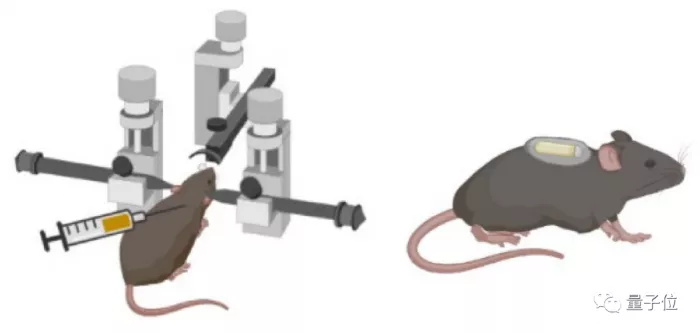
The cerebrospinal fluid of "small fresh meat" in the container will slowly enter the brain of "old age group" mice through a small tube within 7 days.
The other 10 "senile group" mice as the control group were injected with artificial cerebrospinal fluid under the same experimental conditions. Next is the moment to witness miracles.
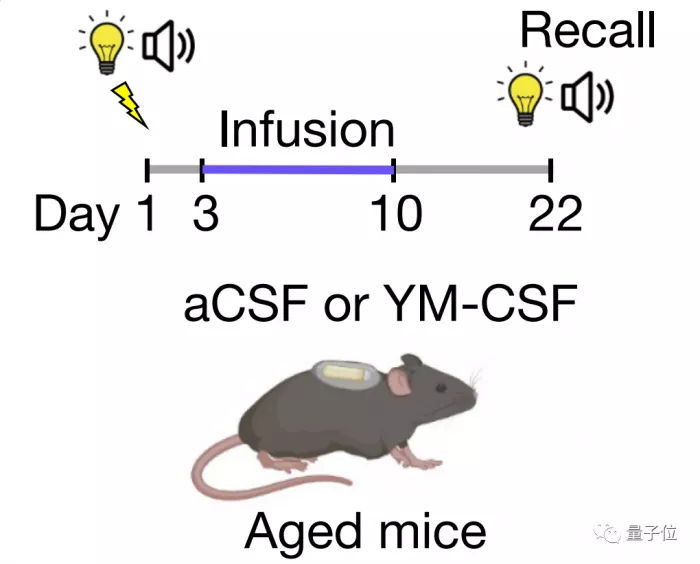
After another 12 days (three weeks from receiving stimulated memory), the researchers asked the "elderly group" to face external stimuli again. That is, the flash and sound accompanied by the electric shock at that time, so as to observe whether they will recall that "painful memory".
The results showed that nearly 40% of the elderly mice who "sucked" young cerebrospinal fluid had stress reactions such as fear when exposed to external stimuli.
In contrast, only 18% of aged mice injected with artificial cerebrospinal fluid produced "painful memory".
Therefore, the researchers believe that young cerebrospinal fluid can restore the ability of some aging brains. As Tony Wyss Coray, a neuroscientist at Stanford University and co-author of the study, said:
The broader implication of this study is that aging brains are still plastic and there are ways to improve their function.
Why
To find out why young cerebrospinal fluid affects memory, the researchers analyzed the hippocampus of older mice.
The results showed that 6 days after injection of young cerebrospinal fluid, the gene expression of oligodendrocytes in the hippocampus of elderly mice increased significantly.
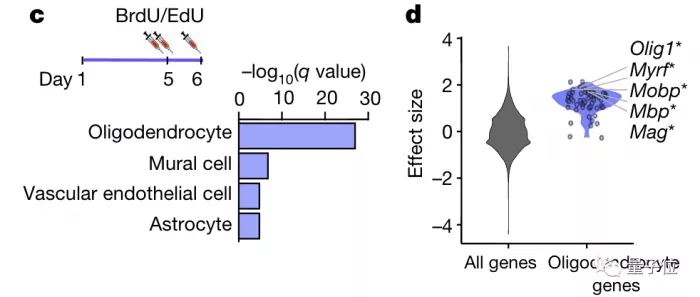
Oligodendrocytes are cells that produce myelin at the end of neurons. The myelin sheath produced is rich in fat and protein, which can wrap the axons of neurons.
In short, it can be compared to the insulation layer outside the wire.
The function is also similar, mainly to ensure that the information transmission between internal neurons is more smooth.
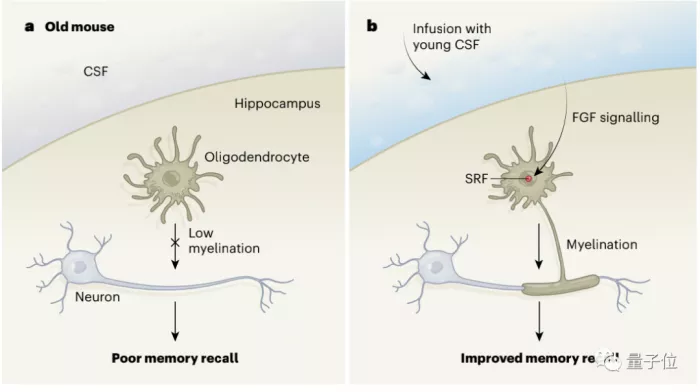
Further, the proliferation of oligodendrocyte precursor cells is related to oligodendrocyte precursor cells (OPC).
The researchers found that oligodendrocyte precursor cells in the hippocampus of elderly mice more than doubled after injection of young cerebrospinal fluid. After 3 weeks of cell proliferation, myelin sheath also increased.
This suggests that young cerebrospinal fluid improves the memory of elderly mice by regulating oligodendrocytes.
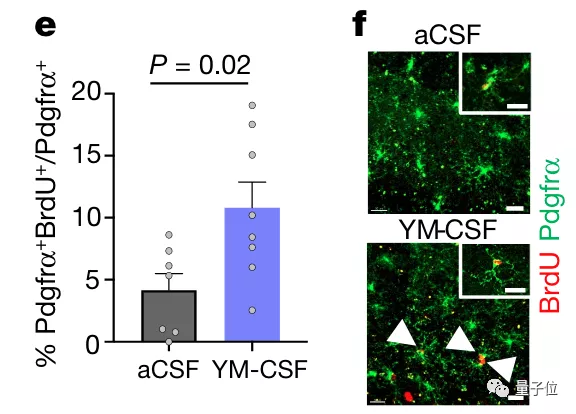
▲ OPC quantitative analysis and experimental pictures (the arrow in F refers to proliferating OPC)
(ym-csf represents the group injected with young cerebrospinal fluid, and ACSF is the control)
To clarify the underlying mechanism, the team further studied the signal transduction pathway activated by the cerebrospinal fluid of young mice.
The results showed that the most obvious increase in gene expression after injection into young cerebrospinal fluid was serum response factor (SRF), which encodes a transcription factor that initiates cell proliferation and differentiation.
By injecting young cerebrospinal fluid into OPC in Petri dishes, the researchers found that after 6 hours, SRF expression returned to baseline levels and downstream targets related to cell cycle and proliferation were up-regulated.
Therefore, the experiment proved that young cerebrospinal fluid activated SRF channel in elderly mice.
At the same time, the researchers also found that fibroblast growth factor fgf17 is a candidate factor for SRF signal transduction.
After adding fgf17 to the cerebrospinal fluid of ordinary elderly mice, it was found that fgf17 could induce OPC proliferation and improve the memory of mice. Moreover, when fgf17 inhibitor is added to OPC treated with young cerebrospinal fluid, OPC proliferation will also be affected.
All the above experiments point out that fgf17 is a key target to restore the function of oligodendrocytes in the aging brain.
Miriam Zawadzki and Maria K. Lehtinen, experts at Boston Children's Hospital, commented on the study in nature.
They said the study had implications for adding drugs to cerebrospinal fluid to treat diseases, especially those caused by aging.
In order to "rejuvenate" the brain, scientists have opened brain holes
The study was led by Professor Wyss Coray.

He is an expert in neuroscience at Stanford University. In 1992, he graduated from the University of bernille in Switzerland with a doctor's degree in immunology. His research interests in the laboratory mainly include brain aging and neurodegeneration, focusing on age-related cognitive decline and Alzheimer's disease.
Previously, they had found that when the blood of young mice was delivered to old mice, the latter's brain would regain vitality. This study was published in nature medicine. The key protein VCAM1 was found. If the expression of VCAM1 was blocked, the learning and memory ability of elderly mice could be restored.
Later, Professor Wyss Coray further found that human umbilical cord blood can also "rejuvenate" the brain of elderly mice.
Of course, in addition to Professor Wyss Coray's team, many scientists around the world have big holes in making the brain "return to youth". Last year, a study in nature aging showed that transplanting bacteria in feces can also reverse aging brain.
Researchers from arlancock University said that some immune changes in elderly mice with aging were reversed after feeding the microorganisms filtered from the feces of young mice to the feeding tube.
These changes include an increase in immune cells in the peripheral blood and the return of microglia in the hippocampus to their youthful form.
On the other hand, Boston University scientists recruited 42 young people and 42 old people for the experiment. They found that transient electrical stimulation of the brain may reverse some of the effects of aging in the brains of older people.
One More Thing
It is worth mentioning that Professor Wyss Coray's relevant research inspired the previously controversial human blood exchange test. That is the famous "Silicon Valley tycoon exchange".
In 2016, led by Ambrosia, an American company, the world's first clinical trial to "treat" aging with young people's blood was carried out. Ambrosia co-founder karmazin said he was inspired by Professor Wyss Coray's research to launch the clinical trial.
It is reported that 600 volunteers over the age of 35 were recruited for the study. The researchers will inject 1.5 liters of healthy young people's blood into each volunteer within two days. Volunteers who come to the experiment have to pay up to $8000 each... It's obviously a game for the rich.
At that time, it was revealed that Peter Thiel, a famous American entrepreneur and venture capitalist and co-founder of PayPal, showed great interest in the matter.
But then again, this kind of "rejuvenation" research is indeed in the process of promotion, and it is indeed easier to trigger ethical discussions.
What do you think of this?
Thesis address: